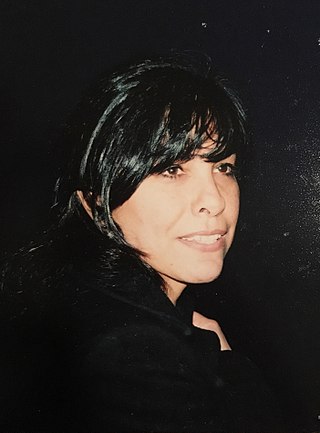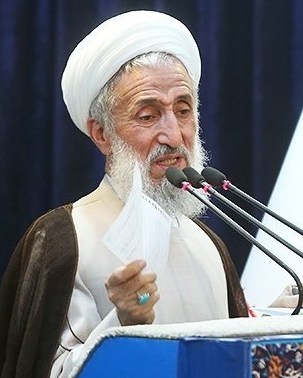
A natural disaster is the highly harmful impact on a society or community following a natural hazard event. Some examples of natural hazard events include floods, droughts, earthquakes, tropical cyclones, lightning strikes, tsunamis, volcanic activity, wildfires. A natural disaster can cause loss of life or damage property, and typically leaves economic damage in its wake. The severity of the damage depends on the affected population's resilience and on the infrastructure available. Scholars have been saying that the term natural disaster is unsuitable and should be abandoned. Instead, the simpler term disaster could be used, while also specifying the category of hazard. A disaster is a result of a natural or human-made hazard impacting a vulnerable community. It is the combination of the hazard along with exposure of a vulnerable society that results in a disaster.

Bitch was an independent, quarterly alternative magazine published in Portland, Oregon. Its tagline described it as a "feminist response to pop culture", and it was described in 2008 by Columbia Journalism Review as "a respected journal of cultural discourse". As a feminist publication, it took an intersectional approach.

Islamic feminism is a form of feminism concerned with the role of women in Islam. It aims for the full equality of all Muslims, regardless of gender, in public and private life. Islamic feminists advocate for women's rights, gender equality, and social justice grounded in an Islamic framework. Although rooted in Islam, the movement's pioneers have also utilized secular, Western, or otherwise non-Muslim feminist discourses, and have recognized the role of Islamic feminism as part of an integrated global feminist movement.
Valentine Moghadam is a feminist scholar, sociologist, activist, and author whose work focuses on women in development, globalization, feminist networks, and female employment in the Middle East.

The Iranian Women's Rights Movement, is the social movement for women's rights of the women in Iran. The movement first emerged after the Iranian Constitutional Revolution in 1910, the year in which the first women's periodical was published by women. The movement lasted until 1933 when the last women's association was dissolved by the government of Reza Shah Pahlavi. It rose again after the Iranian Revolution in 1979.
Atheist feminism is a branch of feminism that also advocates atheism. Atheist feminists hold that religion is a prominent source of female oppression and inequality, believing that the majority of the religions are sexist and oppressive towards women.

Negar Mottahedeh is a cultural critic and film theorist specializing in interdisciplinary and feminist contributions to the fields of Middle Eastern Studies and Film Studies.

The Usos were a Samoan-American professional wrestling tag team consisting of twin brothers Joshua and Jonathan Fatu, better known as Jey and Jimmy Uso, signed with the WWE. The team disbanded after Jimmy turned on Jey, who was later traded to the Raw brand whereas Jimmy remained on the SmackDown brand as a former member of villainous stable The Bloodline. They are the three-time Raw Tag Team Champions and five-time SmackDown Tag Team Champions, making their team overall eight-time champions and holding the record for the longest male tag team championship reign in WWE history at 622 days. The Usos are members of the renowned Anoaʻi family of Samoan wrestlers.
Events in the year 2010 in the Islamic Republic of Iran.

SlutWalk is a transnational movement calling for an end to rape culture, including victim blaming and slut-shaming of sexual assault victims. Participants protest against explaining or excusing rape by referring to any aspect of a woman's appearance. The rallies began on April 3, 2011, in Toronto, Ontario, Canada, after a Toronto Police officer suggested that "women should avoid dressing like sluts" as a precaution against sexual assault. Subsequent rallies have occurred globally.

Roxane Gay is an American writer, professor, editor, and social commentator. Gay is the author of The New York Times best-selling essay collection Bad Feminist (2014), as well as the short story collection Ayiti (2011), the novel An Untamed State (2014), the short story collection Difficult Women (2017), and the memoir Hunger (2017).
Golbarg Bashi is an Iranian-Swedish feminist and former adjunct lecturer of Iranian studies in the US. Among other topics, Bashi has published works and given talks about human rights in the Middle East and the situation of women in Iran.
Hakim Bashi-ye Bala is a village in, and the capital of, Chenar Shahijan Rural District of the Central District of Kuhchenar County, Fars province, Iran.

Kazem Seddiqi is an Iranian Shia scholar and Mujtahid currently serving as Tehran's Friday Prayer Temporary Imam. A rival of President Ahmadinejad, Seddiqi was appointed as interim Friday prayers leader for Tehran by Ayatollah Khamenei in 1 August 2009. The New York Times characterized the appointment as part of an effort to "reinforce [Khamenei's] authority by cultivating divisions between factions" following the controversial June presidential election.

The 2020 Survivor Series was the 34th annual Survivor Series professional wrestling pay-per-view (PPV) and livestreaming event produced by WWE. It was held for wrestlers from the promotion's Raw and SmackDown brand divisions. The event took place on November 22, 2020, from the WWE ThunderDome, hosted at the Amway Center in Orlando, Florida. It was WWE's final PPV presented from the Amway Center during the COVID-19 pandemic as the ThunderDome was relocated to Tropicana Field in St. Petersburg, Florida due to the start of the 2020–21 ECHL and NBA seasons. The theme of the event was brand supremacy and featured wrestlers from the two brands against each other—unlike the 2019 event, NXT was not included at this year's event. The event also celebrated the 30th anniversary of The Undertaker's WWE debut—his retirement ceremony closed the event. This was the fourth Survivor Series event to take place in the state of Florida.
The Bloodline is a villainous professional wrestling stable that performs in WWE on the SmackDown brand. The team is led by Roman Reigns, and features Solo Sikoa, The Rock and Tama Tonga. The majority are members of the Anoaʻi family. They are managed by Paul Heyman. Jey Uso was also a member until June 2023 when he turned on Reigns and was then traded to the Raw brand in September. Jimmy Uso had also briefly left the group right before his brother did but reinserted himself into the group in September, but was kicked out in April 2024. Sami Zayn, who is not a member of the Anoaʻi family, was also an honorary member of the stable from May 2022 to January 2023.

The 2020 Hell in a Cell was the 12th annual Hell in a Cell professional wrestling pay-per-view (PPV) and livestreaming event produced by WWE. It was held for wrestlers from the promotion's Raw and SmackDown brand divisions. The event took place on October 25, 2020, from the WWE ThunderDome, hosted at the Amway Center in Orlando, Florida. This was the final Hell in a Cell held during the month of October, as the 2021 event moved the event series up to June.

The 2021 Elimination Chamber was the 11th Elimination Chamber professional wrestling pay-per-view (PPV) and livestreaming event produced by WWE. It was held for wrestlers from the promotion's Raw and SmackDown brand divisions. The event took place on February 21, 2021, from the WWE ThunderDome, hosted at Tropicana Field in St. Petersburg, Florida. It was WWE's final pay-per-view to be available to livestream on the standalone version of the American WWE Network before the launch of Peacock's WWE Network channel in the United States on March 18; the standalone version of the American WWE Network itself shut down on April 4.

The 2023 Money in the Bank was the 14th annual Money in the Bank professional wrestling pay-per-view (PPV) and livestreaming event produced by the American promotion WWE. It was held for wrestlers from the promotion's Raw and SmackDown brand divisions. The event took place on Saturday, July 1, 2023, at The O2 Arena in London, England. This was the first Money in the Bank to be held outside of the United States as well as WWE's first major event to be held in London since Insurrextion in May 2002 and England in general since Insurrextion in June 2003. It was also the first Money in the Bank to livestream on Binge in Australia.














